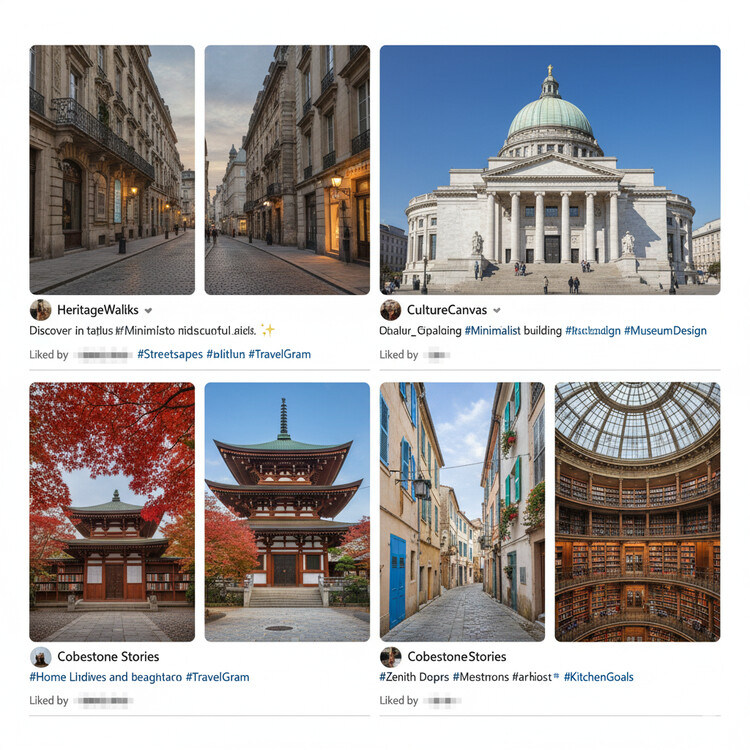 Social Media Feed on Architecture – image generated by Gemini Flash 2.5. Image © Jonathan Yeung via Gemini Flash 2.5
Social Media Feed on Architecture – image generated by Gemini Flash 2.5. Image © Jonathan Yeung via Gemini Flash 2.5
Share
Or
https://www.archdaily.com/1034774/scroll-and-stroll-how-social-media-is-rewriting-architectural-cultural-tourism
Historically—like other cultural forms—architecture has been documented, shared, and promoted primarily through print. Books, journals, and magazines carried the discipline’s arguments and images, and because architectural practice relies so heavily on visual communication, printed journals created a bridge between academic publications and commercial magazines. Through the postwar decades, beautifully produced volumes curated a collective point of view, signaling what the field broadly considered discussion-worthy or exemplary.
Across major cultural centers, a handful of publications shaped this discourse: Their perspectives were typically sophisticated, professional, and carefully edited—distilling an unruly global output into a small constellation of remarkable projects. The system arguably privileged certain practices and geographies, but it also amplified architecture for wider audiences. Buildings began to lodge in public imagination; cultural travel—journeys taken expressly to experience architecture—moved from rarity toward ritual.
Today, the landscape of architectural consumption is far more varied—and volatile. Print is no longer the main conduit; digital platforms deliver a constant stream of images and commentary, pulling architecture into the same attention markets that drive music, film, fashion, and news. The broader culture’s pivot to “fast consumption” has set expectations for brevity and immediacy: shorter videos, compressed narratives, headlines designed to be scanned in seconds. Architecture has not been exempt. Social media—often via influential individuals rather than institutions—now rivals or exceeds legacy outlets in reach. Accuracy and editorial reputation can matter less than velocity, first-person narration, and visual “hook” within the opening moments. The result is a more democratic, diversified conversation—yet one that also risks diluting context and depth in favor of quick, eye-catching impressions.
Related Article Social Media-Friendly Design: Is Architecture Adapting to Viral Trends and Algorithms? 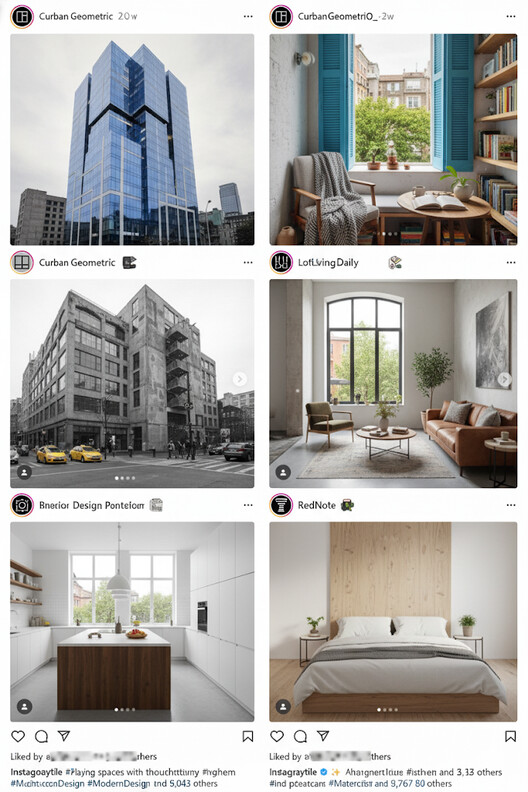 Social Media Feed on Architecture – image generated by Gemini Flash 2.5. Image © Jonathan Yeung via Gemini Flash 2.5
Social Media Feed on Architecture – image generated by Gemini Flash 2.5. Image © Jonathan Yeung via Gemini Flash 2.5
Beyond the Bilbao Effect: Micro-Destinations and the Social Feed
For years, to plan a cultural trip on architecture and the city, tourists relied on guidebooks, hotel concierges, canonical “must-see” sites, and word of mouth. That habit is fading. Guidebooks are, for most travelers, largely a thing of the past. Instead, people hunt for “cool spots,” “hidden gems,” and “secret places” via social platforms. In Hong Kong—a city long defined by tourism—the same tools are reshaping local self-perception: Instagram and Xiaohongshu (REDNote) now drive discovery. Content creators compete to uncover the “lesser-known,” building niche followings on exclusive tips while monetizing visibility through featured places. The effect has been especially strong among mainland visitors, spawning new urban and architectural hotspots and prompting reflection on how architectural culture is promoted, absorbed, and circulated.
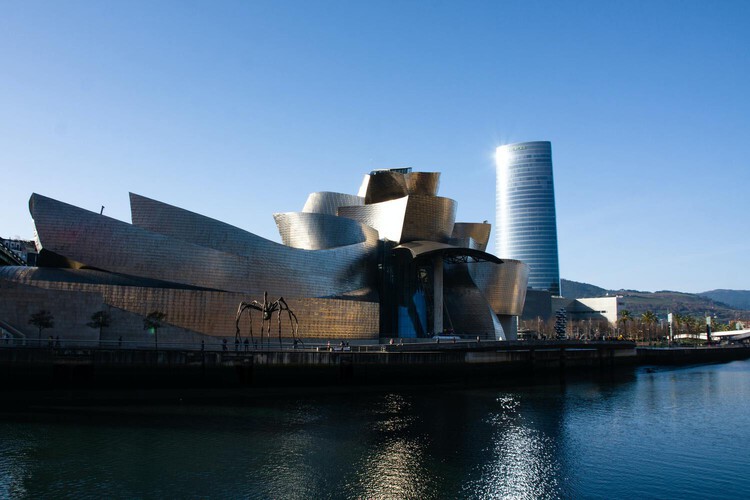 Guggenheim Museum Bilbao. Image © Antonio Gabola on Unsplash
Guggenheim Museum Bilbao. Image © Antonio Gabola on Unsplash
This wave is distinct from the capital-intensive “Bilbao Effect,” where major institutions commission world-renowned architects to deliver signature landmarks that anchor destination tourism. By contrast, Instagrammable sites are ad hoc, under-the-radar, and often small-scale. Although many posts are uncritical, celebrating flashy décor over well-resolved spatial design, some meaningful accounts do surface overlooked conditions and lesser-known practices—traditional crafts, heritage techniques, community architects—previously sidelined by institutional bias or limited reach. In that sense, “Instagramming architecture” can be unexpectedly instructive for both practitioners and the public.
Metrics over Meaning: The Perils of Designing for the Feed
Opening architectural discourse to social media—largely without guardrails—brings real challenges. In academia, students now draw from a vast, uneven stream of online references. Much of it is not curated or scholarly; some content glamorizes waste, unsustainable construction, or misinforms by oversimplifying how buildings are made. That noise can hinder learning. For the general public, the barrier to engaging with architecture has dropped: what once required effort and cost is now a swipe away. This access is valuable, but it also amplifies counterproductive behavior—overly hostile commentary, performative outrage, and extreme takes that generate heat rather than light. Influencers, meanwhile, may form confident opinions without understanding procurement, codes, budgets, sequencing, and risk—stoking controversy without grounded claims.
Institutions are acutely aware of social media’s reach, and that awareness can also skew priorities. “Instagrammable” moments get written into briefs, encouraging perspective-driven corners that can pivot to trends. Too often, project success is judged by online reaction. While metrics can reflect a slice of public sentiment, equating social buzz with civic value is risky: many commenters have only seen a picture, not experienced the building. The result can be design by metrics—optimized for engagement rather than for daylight, circulation, longevity, or care.
Pace is affected, too. The instant tempo of platforms pressures architecture to be developed and promoted at similar speed. Chasing virality can resemble “certificate-chasing”: collecting badges of approval while sidelining the slower work—resolving sections, coordinating services, detailing for durability, planning for operations and maintenance. When attention concentrates on one or two photogenic vignettes, the deeper responsibilities of architecture—coherence, comfort, adaptability, and stewardship—risk being reduced to a backdrop for the next post.
Off-Route, On Record: Finding Architecture Outside the Canon
Part of the appeal is that these platforms feel less “typical.” Off-route destinations are not pre-validated by large cultural institutions; they read as bottom-up curation and personal discovery. That independence—combined with first-person storytelling and rapid, image-led formats—offers a fresher way to engage with the city and the architectures that frame it. Just as important, the instagrammability of places has democratized attention: non-specialists now have a voice in steering architectural discourse, surfacing buildings and spaces that might otherwise be overlooked.
Hong Kong’s street-food scene offers a clear example. Bing Kee, one of the city’s often cited spots on Instagram and RED, draws steady crowds from late morning. Many come for the photo, but the setting rewards closer reading. Its spatial logic is rooted in the city’s post-war dai pai dong (cooked-food stall) licenses, introduced to let lower-income families operate without formal shopfronts, often along streets, in alleyways, or at building edges. Bing Kee is among the few that remain. Working across an alley and a cluster of hawker stalls, it demonstrates an agile micro-architecture that can expand from a ten-seat nook to a fifty-seat dining room in minutes. In doing so, it frames hawker culture as a legitimate architectural typology and shows how adaptive, improvised heritage has been squeezed by contemporary regulation. Social media did not invent this story, but it has recirculated it—drawing public attention to a layer of urban architecture that might otherwise have gone unnoticed.
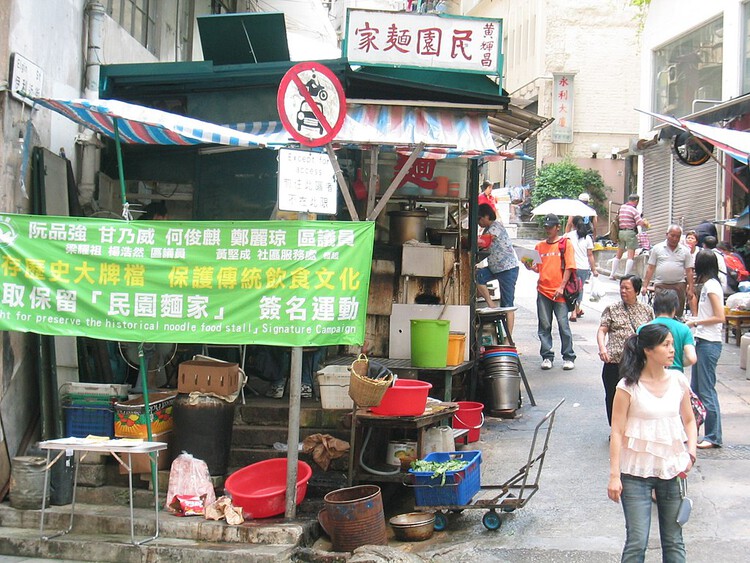 Dai Pai Dong / Hawker Stalls Architecture in Hong Kong. Image © I, K.C. Tang via Wikipedia under license CC BY-SA 3.0Beyond Optics: Pairing Fast Images with Slow Understanding
Dai Pai Dong / Hawker Stalls Architecture in Hong Kong. Image © I, K.C. Tang via Wikipedia under license CC BY-SA 3.0Beyond Optics: Pairing Fast Images with Slow Understanding
Architecture’s relationship with Instagram is a classic double-edged sword. On one hand, meaningful cultural discoveries and rediscoveries have renewed appreciation for lesser-known buildings—the ordinary fabric of everyday life. Design as cultural content is more widely available and broadly valued. On the other hand, appreciation can be unguided and unmoored from analysis: attention gravitates to silhouettes, color, and luxe finishes rather than organization, spatial sequence, performance, or construction. Public opinion absolutely matters, but it is fair to ask whether certain trends reflect genuine civic preference or a strategy to harvest clicks—an architecture of optics that rides cultural tourism without deepening understanding.
Even so, social platforms have proved remarkably effective at directing visitor traffic to cities, places, and buildings. Institutions and public agencies increasingly partner with creators to promote architectural culture, seeking collaborations that align quick media with credible narratives. The question is less whether a “Bilbao effect” can be replicated than whether a slower, distributed effect can emerge: can small-scale spaces, urban rooms, and heritage fragments benefit from social buzz in a way that sustains care and context? With calibrated storytelling—pairing image with slower explanation, route with history—the answer can be yes.
This article is part of the ArchDaily Topics: The Architecture of Culture Today. Every month we explore a topic in-depth through articles, interviews, news, and architecture projects. We invite you to learn more about our ArchDaily Topics. And, as always, at ArchDaily we welcome the contributions of our readers; if you want to submit an article or project, contact us.

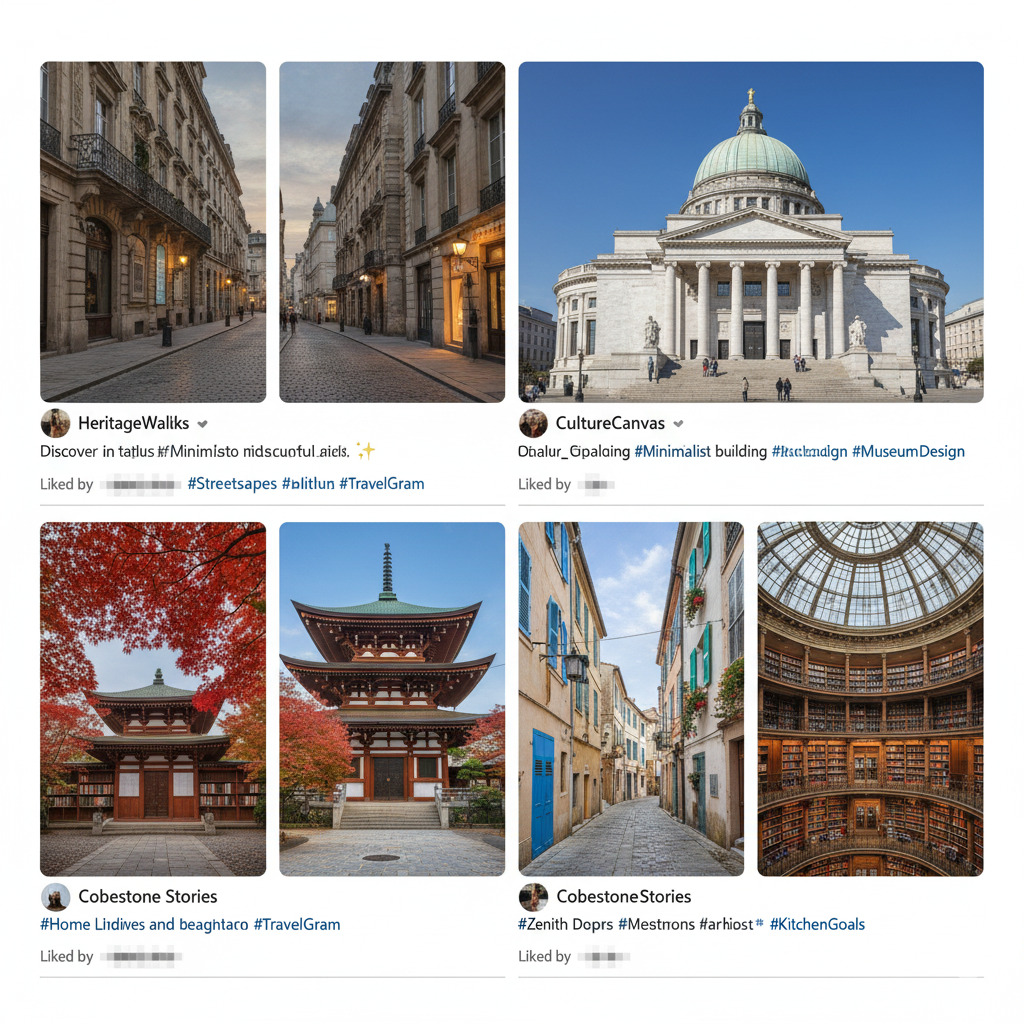

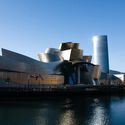


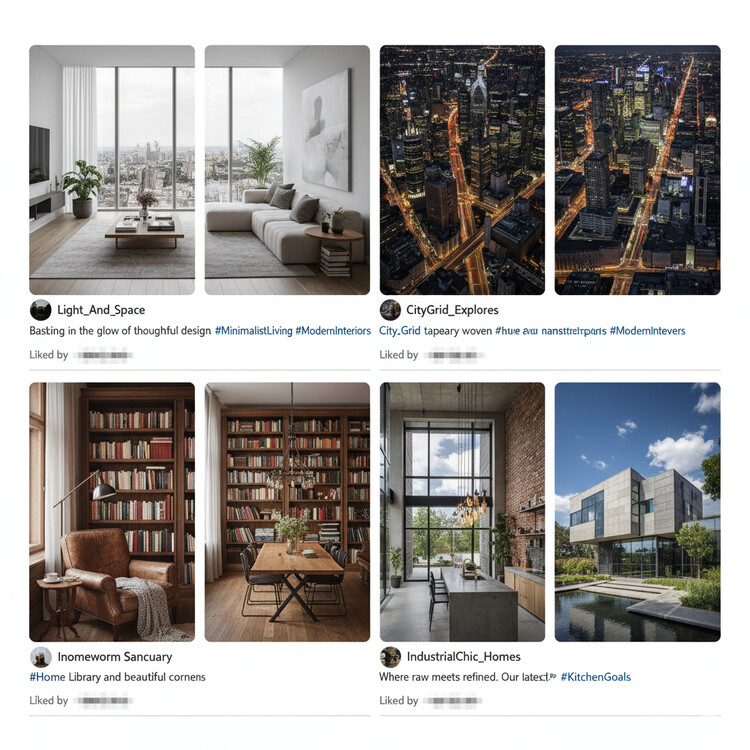 Social Media Feed on Architecture – image generated by Gemini Flash 2.5. Image © Jonathan Yeung via Gemini Flash 2.5
Social Media Feed on Architecture – image generated by Gemini Flash 2.5. Image © Jonathan Yeung via Gemini Flash 2.5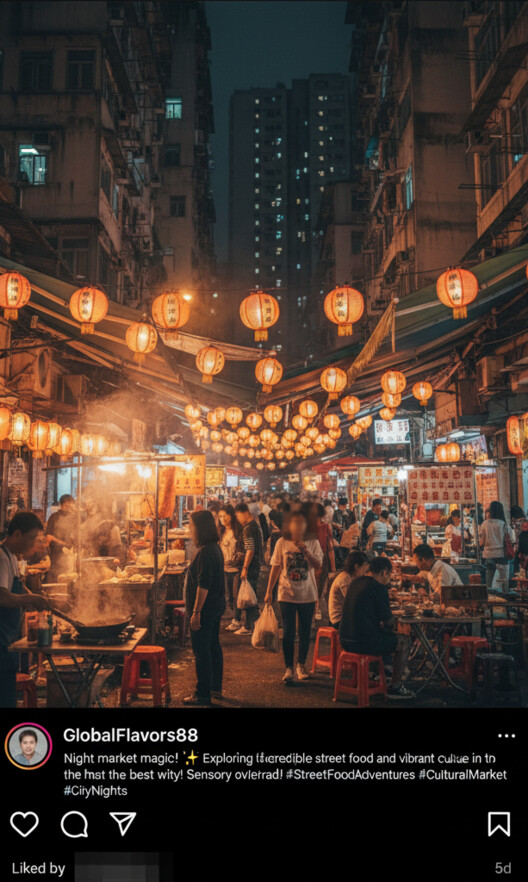 Social Media Feed on Architecture – image generated by Gemini Flash 2.5. Image © Jonathan Yeung via Gemini Flash 2.5
Social Media Feed on Architecture – image generated by Gemini Flash 2.5. Image © Jonathan Yeung via Gemini Flash 2.5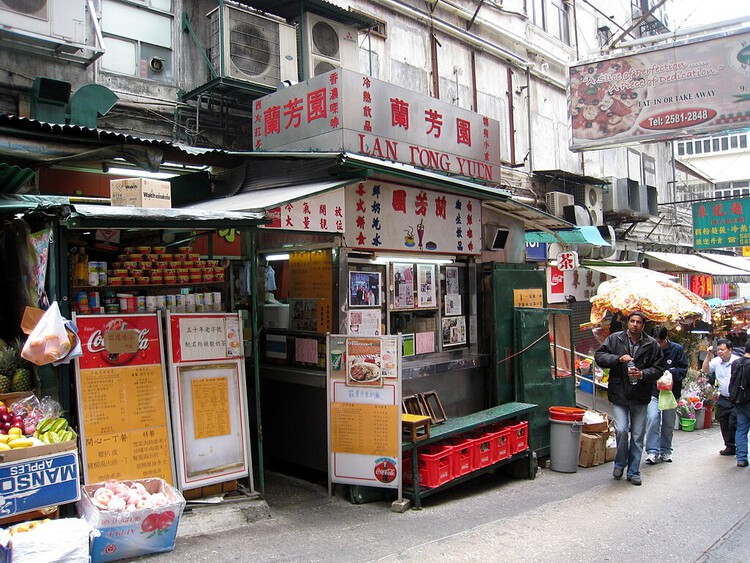 Dai Pai Dong / Hawker Stalls Architecture in Hong Kong. Image © WiNG via Wikipedia under license CC BY 3.0
Dai Pai Dong / Hawker Stalls Architecture in Hong Kong. Image © WiNG via Wikipedia under license CC BY 3.0